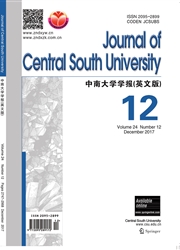

 中文摘要:
中文摘要:
Focused on the Klinkenberg effect on gas seepage, the independently developed triaxial experimental system of gas seepage was applied to conduct research on the seepage characteristics of coal seam gas. By means of experimental data analysis and theoretical derivation, a calculation method of coal seam gas permeability was proposed, which synthesized the respective influences of gas dynamic viscosity, compressibility factor and Klinkenberg effect. The study results show that the Klinkenberg effect has a significant influence on the coal seam gas seepage, the permeability estimated with the method considering the Klinkenberg effect is correct, and this permeability can fully reflect the true seepage state of the gas. For the gas around the standard conditions, the influences of dynamic viscosity and compressibility factor on the permeability may be ignored. For the gas deviating far away from the standard conditions, the influences of dynamic viscosity and compressibility factor on the permeability must be considered. The research results have certain guiding significance in forming a correct understanding of the Klinkenberg effect and selecting a more accurate calculation method for the permeability of coal containing gas.
 英文摘要:
英文摘要:
Focused on the Klinkenberg effect on gas seepage, the independently developed triaxial experimental system of gas seepage was applied to conduct research on the seepage characteristics of coal seam gas. By means of experimental data analysis and theoretical derivation, a calculation method of coal seam gas permeability was proposed, which synthesized the respective influences of gas dynamic viscosity, compressibility factor and Klinkenberg effect. The study results show that the Klinkenberg effect has a significant influence on the coal seam gas seepage, the permeability estimated with the method considering the Klinkenberg effect is correct, and this permeability can fully reflect the true seepage state of the gas. For the gas around the standard conditions, the influences of dynamic viscosity and compressibility factor on the permeability may be ignored. For the gas deviating far away from the standard conditions, the influences of dynamic viscosity and compressibility factor on the permeability must be considered. The research results have certain guiding significance in forming a correct understanding of the Klinkenberg effect and selecting a more accurate calculation method for the permeability of coal containing gas.
 同期刊论文项目
同期刊论文项目
 同项目期刊论文
同项目期刊论文
 期刊信息
期刊信息
